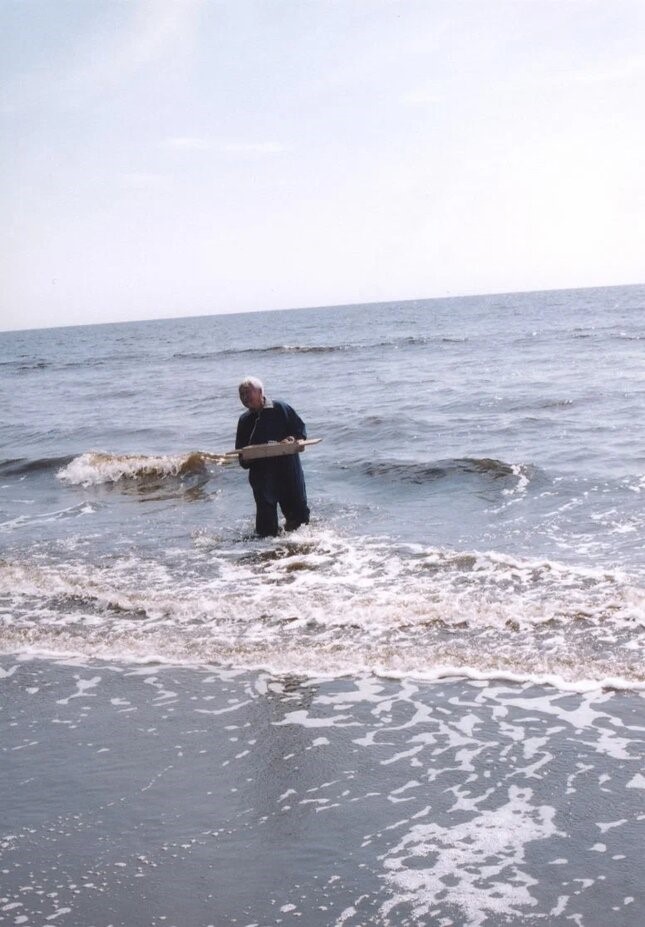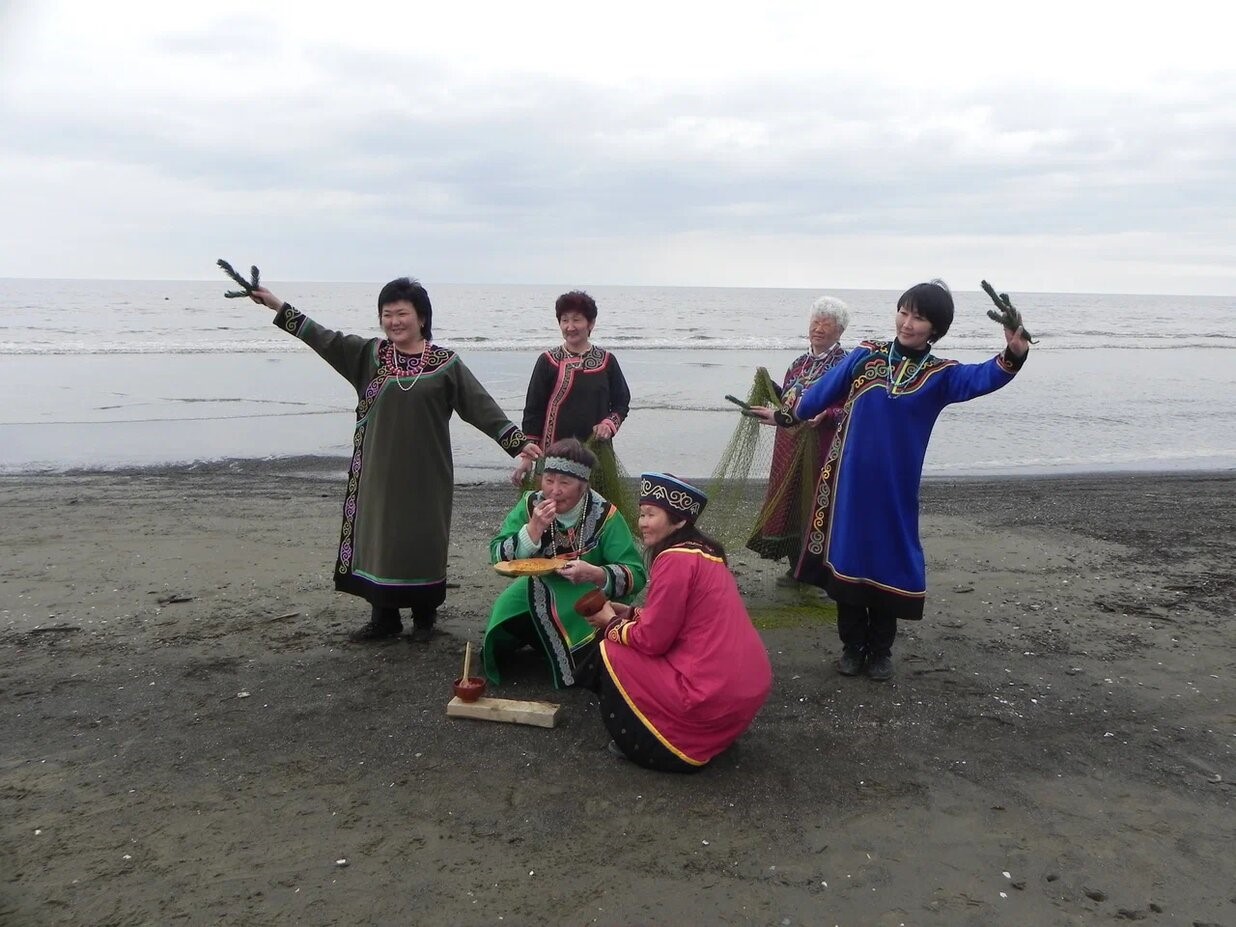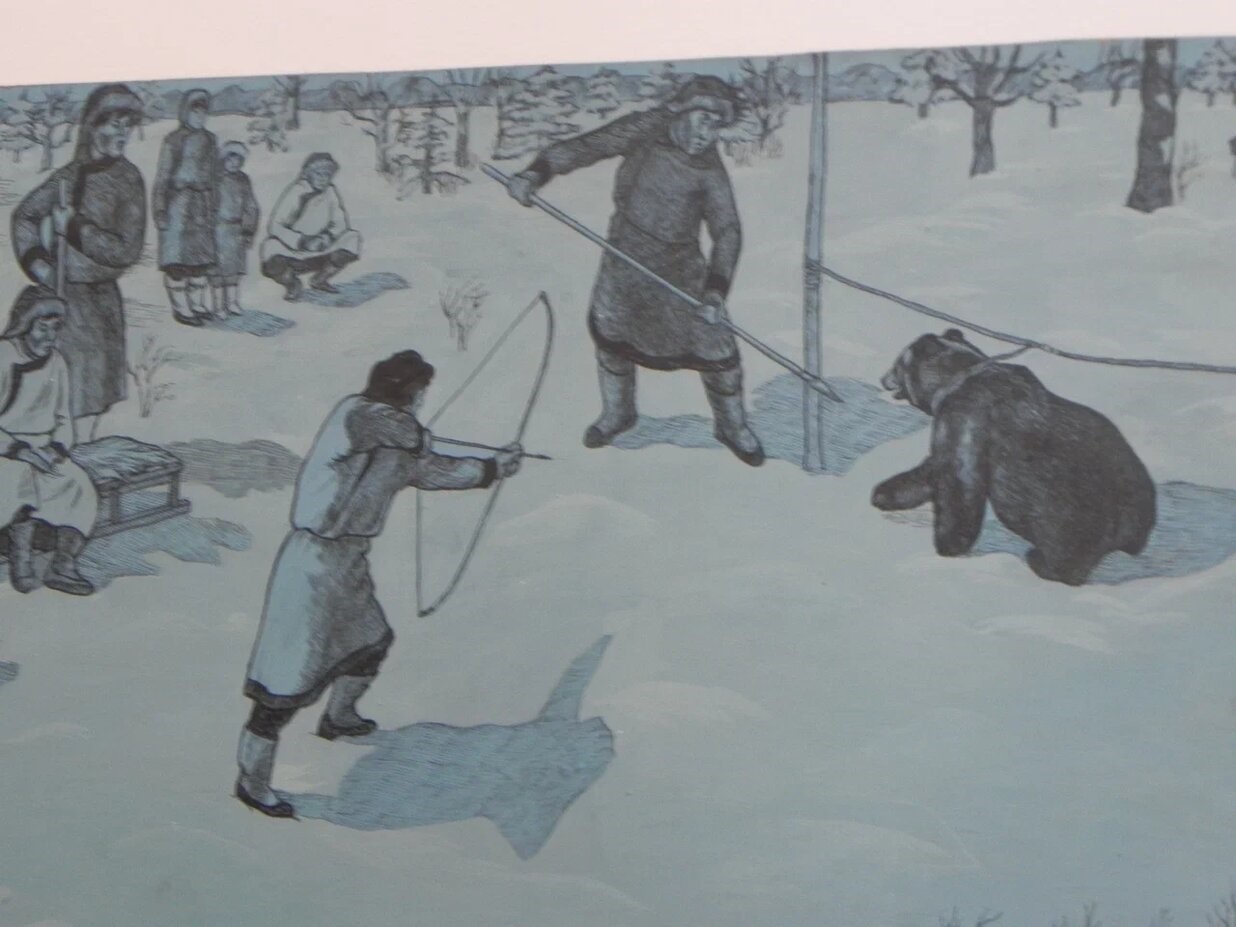|
|
Institute of Ethnology and Anthropology, Russian Academy of Sciences
Novikova Natalia Ivanovna
|
The Nivkh. Spiritual Culture (Mythological Picture of the World, Traditional Beliefs, Holidays and Rituals)
The religious beliefs of the Nivkh were associated with the surrounding natural landscape, primarily the water area and taiga. The universe was imagined to be complex (but not necessarily multi-tiered) and contained the world of humans, the heavenly realm, the underground, and the underwater worlds. They believed in the master spirits of the taiga, mountains, and sea. The sea, according to the Nivkh, was the abode of the “master of the sea” and his “sea people” (or “water people”), to whom they made offerings for providing fish and seals. They performed the rituals twice a year, before the seal hunting and after the fishing season, that is, in early spring and late autumn.


Erukhim Kreinovich, an outstanding researcher of the language and culture of the Nivkh, wrote: “In different Nivkh communities, I came across myths about the physical intimacy of a Nivkh man with a fish, Nivkh women with snakes, lizards and frogs, heard legends about female foxes who came to seduce Nivkh men, the story of an eagle owl marrying a Nivkh woman, making the eagle owls allies of the Nivkh in inter-tribal wars.
However, these legends are rare in comparison with the legends about the physical intimacy of the Nivkh (both male and female) with she-bears and he-bears. Such legends are widespread in all the Nivkh communities.” It is no coincidence then that the Bear Festival occupied a special place in the Nivkh culture, having disappeared only by the 1960-1970s. The long process of raising a bear cub in a cage after the death of a close relative, walking the same (grown) bear around the village, killing it by the representatives of the in-law family at a special shooting range, sacrificing dogs at this festival, feeding the bear’s skull, using a “music log”, and the inau wood-shaving sticks (according to Shternberg, these are intercessor speakers who, together with the bear, will go to the master of the taiga to remind him of the needs of the Nivkh and become his talismans), ritual utensils - these are just some of the features that significantly distinguished the Bear Festival of the Nivkh (and the Amur-Sakhalin peoples in general) from the all-Siberian and the Ob-Ugric variants.



It is believed that shamanism among the Nivkh was developed to a lesser extent than among the other peoples of the Amur, which is most likely explained only by an insufficient degree of research. Everything that is known about shamans (both men and women), that is, the shaman's disease, their acquisition and inheritance of helping spirits, the sexual relationship of the shaman with the helping spirit, the acquisition and use of the tambourine, the functions of a shaman, etc. - all this fits well into the general picture of this phenomenon among the peoples of the Amur and Sakhalin.
The Nivkh folklore includes texts that are divided by the Nivkh into certain groups: the
tylgu
(
tylgur
/
tylgursh
) contain information that is reliable from the point of view of the narrator; they are mythological stories, for example, about marriages between humans and animals, shamanic legends. Another narrative genre was called
nyzit
by the Amur Nivkh; researchers compare these texts to European fairy tales. The
tylgur
were usually listened to in silence, and the
nizyt
was accompanied by exclamations of approval.
Another genre was the ngastur, or ngastund (Amur Nivkh:
ngyzit
) epic tales, which were described over a hundred years ago in the works of Lev Shternberg. The Nivkh epic was recorded by Bronislav Pilsudski, Erukhim Kreinovich, and Galina Otaina. In 2013, the epic of the Sakhalin Nivkh “The Settlement of the Black Land Bay”, recorded from the storyteller Khytkuk in 1974 by the Nivkh writer and poet Vladimir Sangi, was published for the first time not as a short prosaic adaptation, but in the form of a transcript of the actual poetic text. In the epic tales of the Nivkh, the hero always acts alone, turning for help not to his fellow tribesmen, but to spirits and representatives of the animal world.
There are also small folklore genres, in particular riddles (
utkhavrnd
). The singing genre is represented by the lund/lu songs. The musical instruments, in addition to the tambourine and ritual rattles, included mouth harps, whistles, and the
tyngryn
, a one-stringed bowed instrument.
Scholars distinguish two sides to creating decorative art in the Nivkh culture. One of them is considered to be female and was associated with sewing and decorating clothes, shoes, hats, bedding, and birch bark dishes. The second, which had signs of artistic craft, was mainly wood carving.



























































